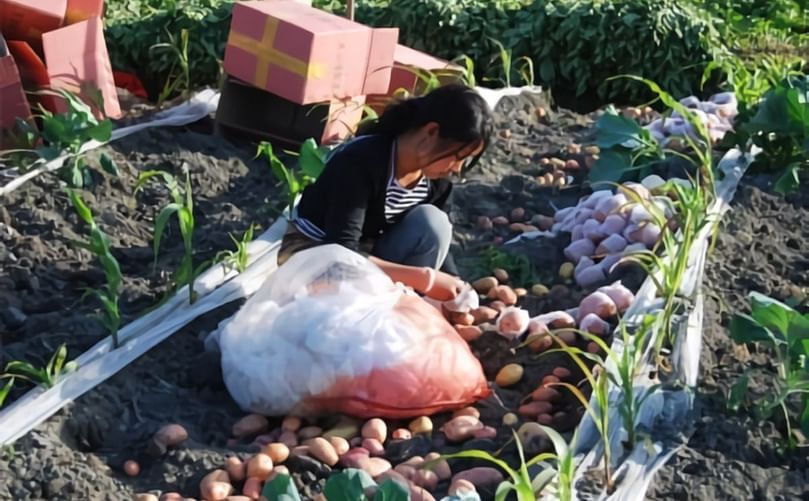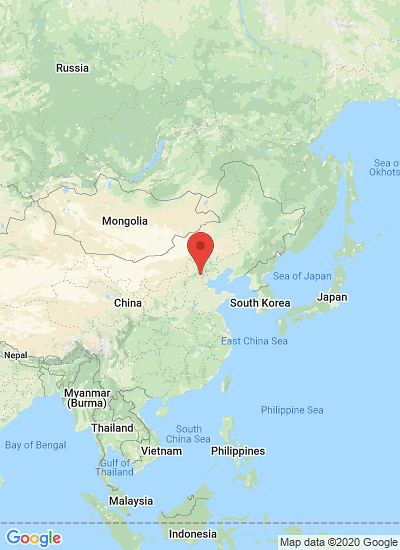Increasing potato production for food security in China could bring varied environmental benefits. Courtesy: CIP
Growing potatoes in rice paddies is a sustainable intensification in Southern China

With approximately 19% of the global population and just 9% of the world’s arable land, China has long sought to improve food production and, in recent decades, potatoes have played an increasingly important role in that quest.
As farmland is lost to urbanization and soil degradation threatens yields, the cultivation of potato in southern China’s rice paddies in winter, when that land might otherwise lie fallow, has the potential to boost food security, farmer incomes, and sustainability, according to recent research.
A recent article published by a team of CIP scientists in the American Journal of Potato Research finds that integrating potatoes into rice farming systems in southern China can yield some benefits for smallholder farmers, but also brings some challenges that must be anticipated for achieving optimal yields.
According to the article’s lead author, Lao Yu, a research assistant at China’s High Latitude Crops Institute, rotating rice and potato crops in paddies generates both economic and ecological benefits.

A farmer harvests potatoes in Yunnan, a province with great potential for sustainable intensification.Courtesy: CIP
"Rice-potato crop rotation systems play an important role in alleviating poverty in rural China, and in contributing to sustainable agriculture."Rice may be the foundation of the Chinese diet, but as Yu and co-authors report, potatoes have become increasingly popular over the past 15 years, as the government promoted the crop’s cultivation and chefs introduced tubers into a growing array of dishes. Between 2007 and 2019 alone, per capita, potato consumption doubled in China.
According to Xiaoping Lu, the International Potato Center (CIP) Deputy Director-General for the CIP-China Center for Asia-Pacific (CCCAP), and one of the study’s authors, about half of China’s potatoes are grown in the north, where long summer days facilitate high production.
However, over the past two decades, farmers in southern provinces have increasingly grown tubers in rice paddies during dry winter months.
Lu noted that multi-cropping is widely practiced in China, but the use of potato as a winter crop in rice paddies began in Guangdong Province, in the 1980s, in response to the rising demand for potatoes in nearby Hong Kong. As potato consumption grew on the Chinese mainland, farmers in the southern provinces of Yunnan and Sichuan followed suit, and those three provinces now produce about a quarter of the country’s potatoes.
Previous studies have confirmed that incorporating potatoes into fallow rice paddies can increase farmer incomes, and researchers identified 16 million hectares of rice paddies that are currently fallow in the winter.
However, Lu noted that lower-priced potatoes from the northern provinces, which are conserved in cold storage and shipped around the country, can decrease southern farmers’ profits from potatoes. He explained that the government aims to offer production and market forecasts to help those farmers make a profit from the crop.
In addition to improving food production and incomes, potato-rice rotations can have a lighter environmental footprint than most farming systems, improving soil health and input use efficiency. This happens in part because potato produces more calories on less land and with less water than most staples.
Research by Beibei Liu et al. published in Nature Food last year indicates that integrating potato as a staple crop to meet increased food demand in China – rather than rice, wheat, or maize – could potentially reduce the total carbon, land, and water impacts of staples in the country by 17–25% by 2030.
Lu Yao noted that while rice-potato rotation is quite common in Guangdong, there is still room for significant expansion in Yunnan and other provinces.
According to Philip Kear, a potato breeder based at CCCAP, CIP and Chinese partners are working to facilitate the expansion of rice-potato sustainable intensification by breeding early-maturing, disease-resistant potato varieties and cooperating on innovations to improve management of late blight – the most destructive potato disease – which can both improve farmer yields and reduce environmental impacts.
Philip Kear:
"We can only assume the demand for potato will continue to grow. Our goal is to help farmers meet that demand, and increase their incomes while reducing their environmental impact."






